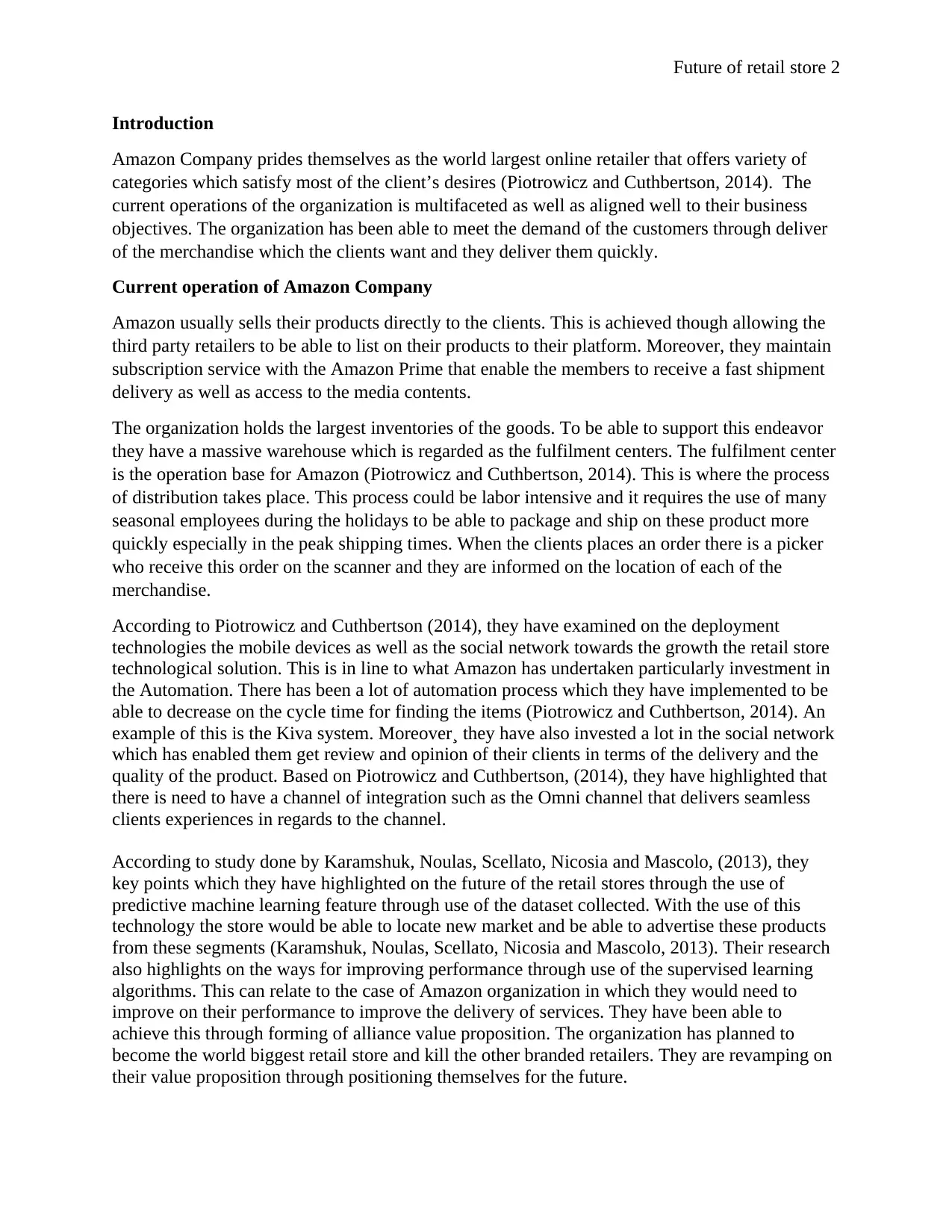The Future of Retail Stores: Amazon's Competitive Advantage Analysis
VerifiedAdded on 2020/03/16
|3
|722
|30
Report
AI Summary
This report analyzes the future of retail stores, focusing on Amazon's business strategy and competitive advantages. It begins with an introduction to Amazon as a leading online retailer, emphasizing its diverse product categories and customer-centric approach. The report details Amazon's current operations, including direct sales, third-party retailers, and its subscription service, Amazon Prime, highlighting its extensive fulfillment centers and the labor-intensive processes involved in order fulfillment. It explores Amazon's investments in automation, such as the Kiva system, and social networks, to improve customer experience and gather feedback. The report references research on omnichannel integration and the use of predictive machine learning to optimize retail store placement and improve performance. It concludes by examining Amazon's strategic positioning to become the world's largest retail store and its commitment to revamping its value proposition for the future. The report includes references to relevant academic papers and studies.
1 out of 3










![[object Object]](/_next/static/media/star-bottom.7253800d.svg)